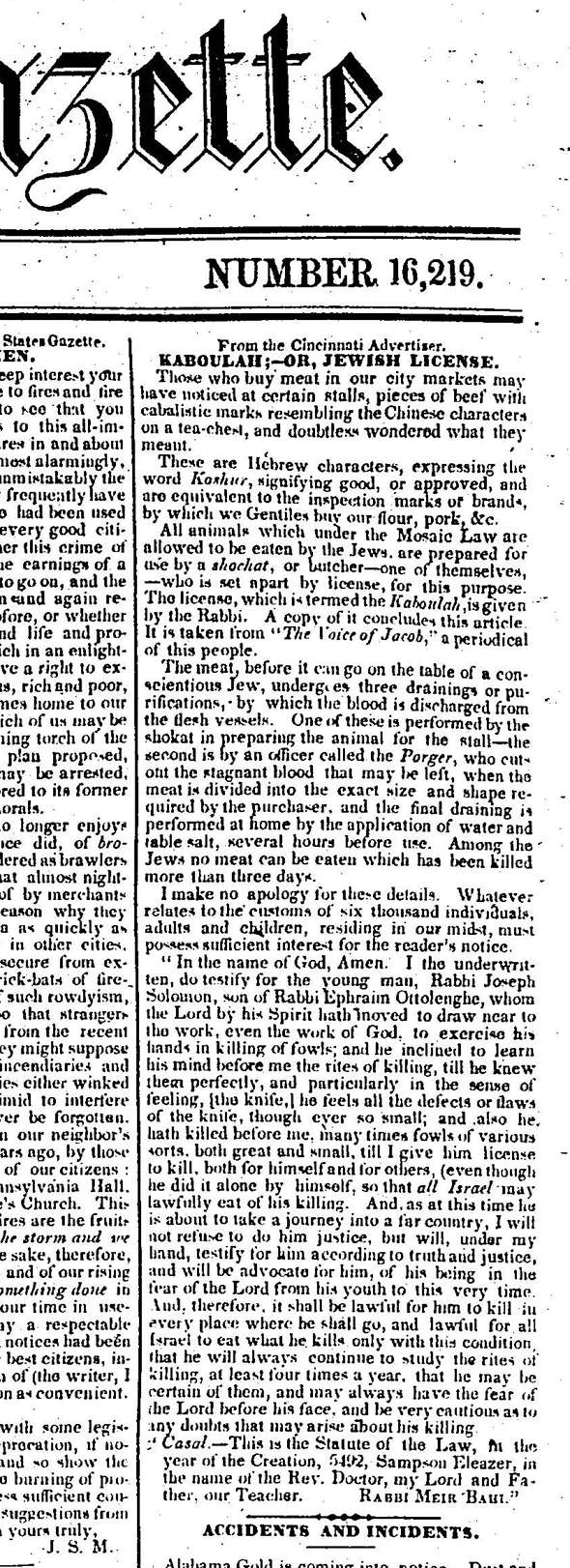Here's an interesting piece from 1848, the North American and United States Gazette (Philadelphia) January 27, 1848 about kosher. The piece is reprinted from a Cincinnati newspaper, which also, incidentally, hints at what a Jewish center in the United States Cincinnati was.
The article points out to readers that many of them may have noticed meat for sale with "cabalistic marks, resembling the Chinese characters on a tea-chest" and wondered what they were. So it points out that they are the Hebrew letters which spell kosher "signifying good, or approved, and are equivalent to the inspection marks or brands by which Gentiles buy our flour, pork, &c."
It then goes on to print a translation of a kabbalah certificate (approving a shochet), giving the interesting apology that since there are 6000 Jews living among us that the customs of such a large, local group cannot fail to be of interest to all (while disclaiming that the writer needs to make any apology).
As you can see, the certificate was dated 5492 - 1732, and is signed by "Rabbi Meir Baki." and the shochet is "Rabbi Joseph Solomon, son of Rabbi Ephraim Ottolenghe." This Rabbi Joseph Solomon Ottolenghe was an Italian Jewish convert to Christianity, who lived in England and then in Colonial Georgia in America. As far as I can tell, his kabbalah certificate for shechita was first translated in D'Blossiers Tovey's Anglia Judaica (1738) pp.299-300.
Also included are some rules of kashrut.






No comments:
Post a Comment